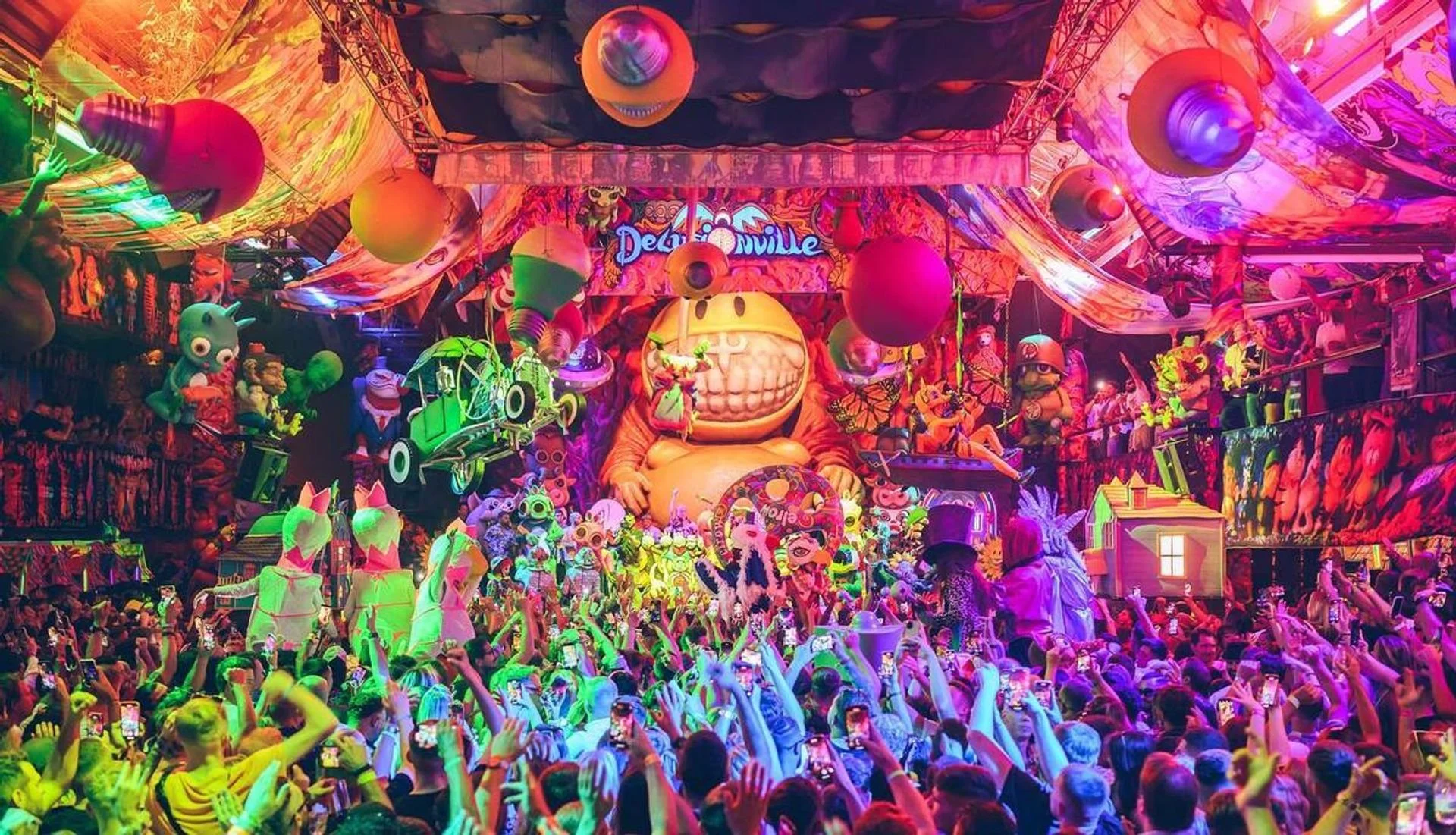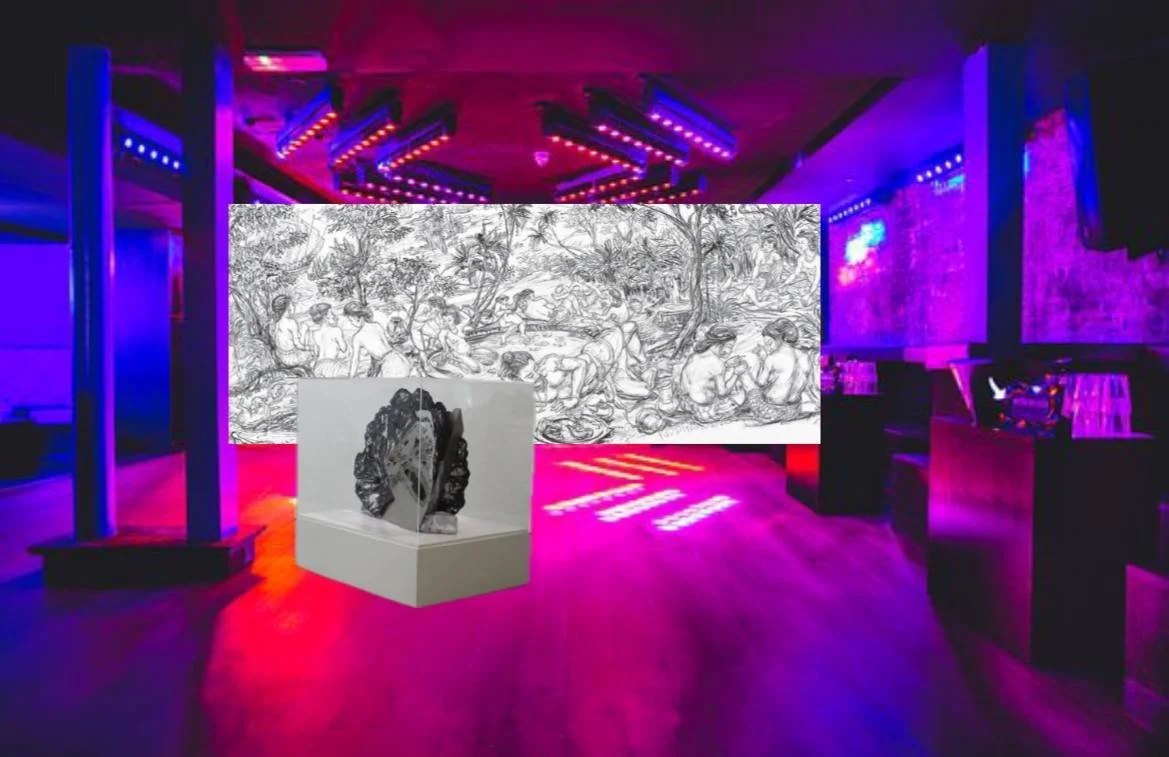
Fine Art: After Hours
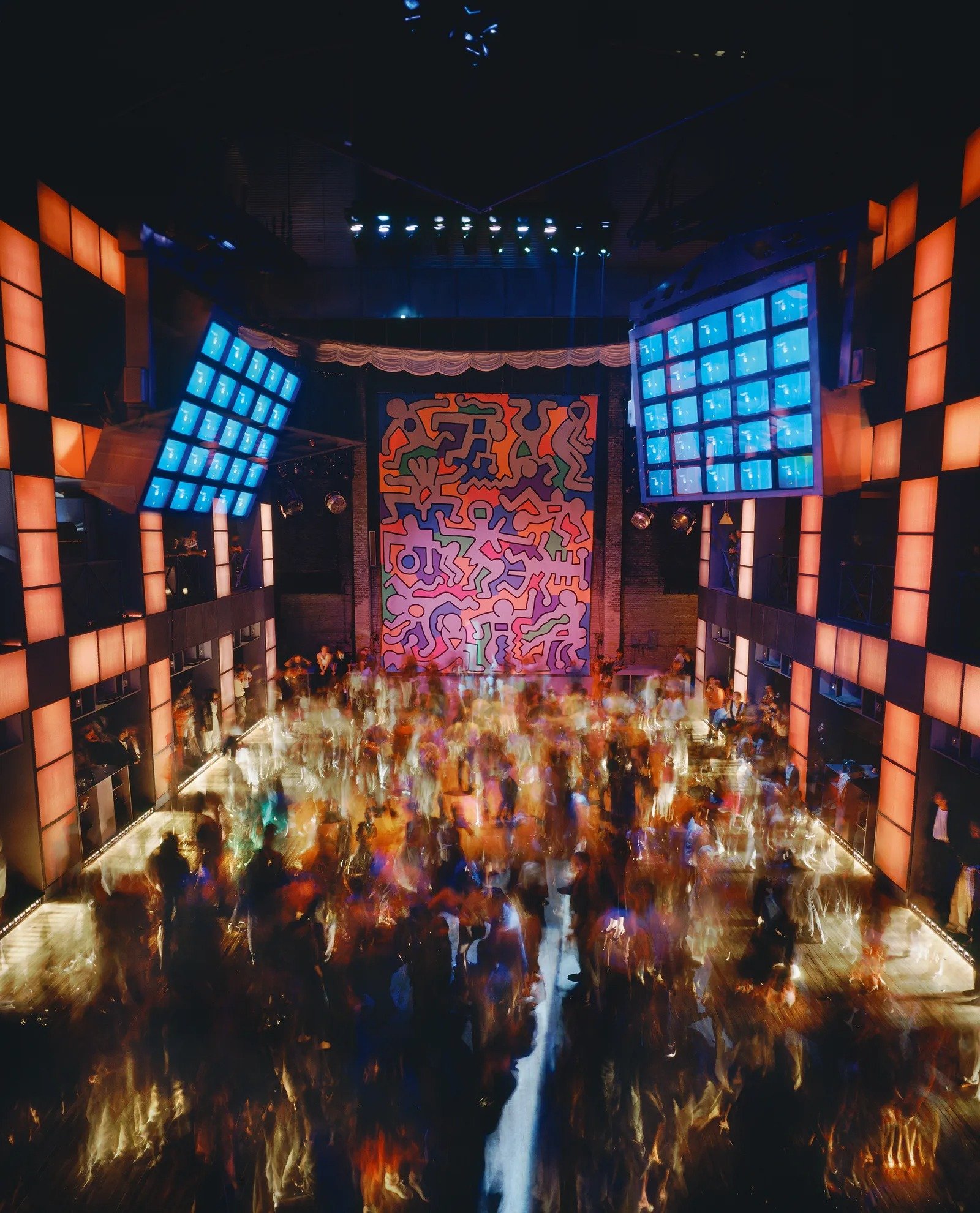
The main dancefloor of the Palladium Nightclub hosted a massive Keith Haring mural.
Image © Timothy Hursley
What’s that one thing you find yourself thinking about a lot, even if it seems random or niche? For me, it’s those Keith Haring and Basquiat murals that once graced the walls of the Palladium nightclub - that iconic New York City hotspot located at 126 East 14th Street in Manhattan. Known for its opulent interiors, cutting-edge sound and lighting systems, and rotating art installations, Palladium was a cultural hub for the city's vibrant nightlife scene.
The club was famous for hosting extravagant theme nights, performances by major music acts, and serving as a gathering spot for celebrities, artists, and fashion icons. It captured the hedonistic spirit of the 1980s and 1990s before eventually closing in 1997. The building was later demolished to make way for a New York University dormitory, marking the end of an era for NYC's club scene.
 |
The light-up panels brought a touch of 1980s high-tech to proceedings – and the inescapable feeling that guests were within some slick department store or else on the set of a game show. ‘It was enough to make you wonder if cash prizes might be handed out for your partying,’ the author of this article says. |
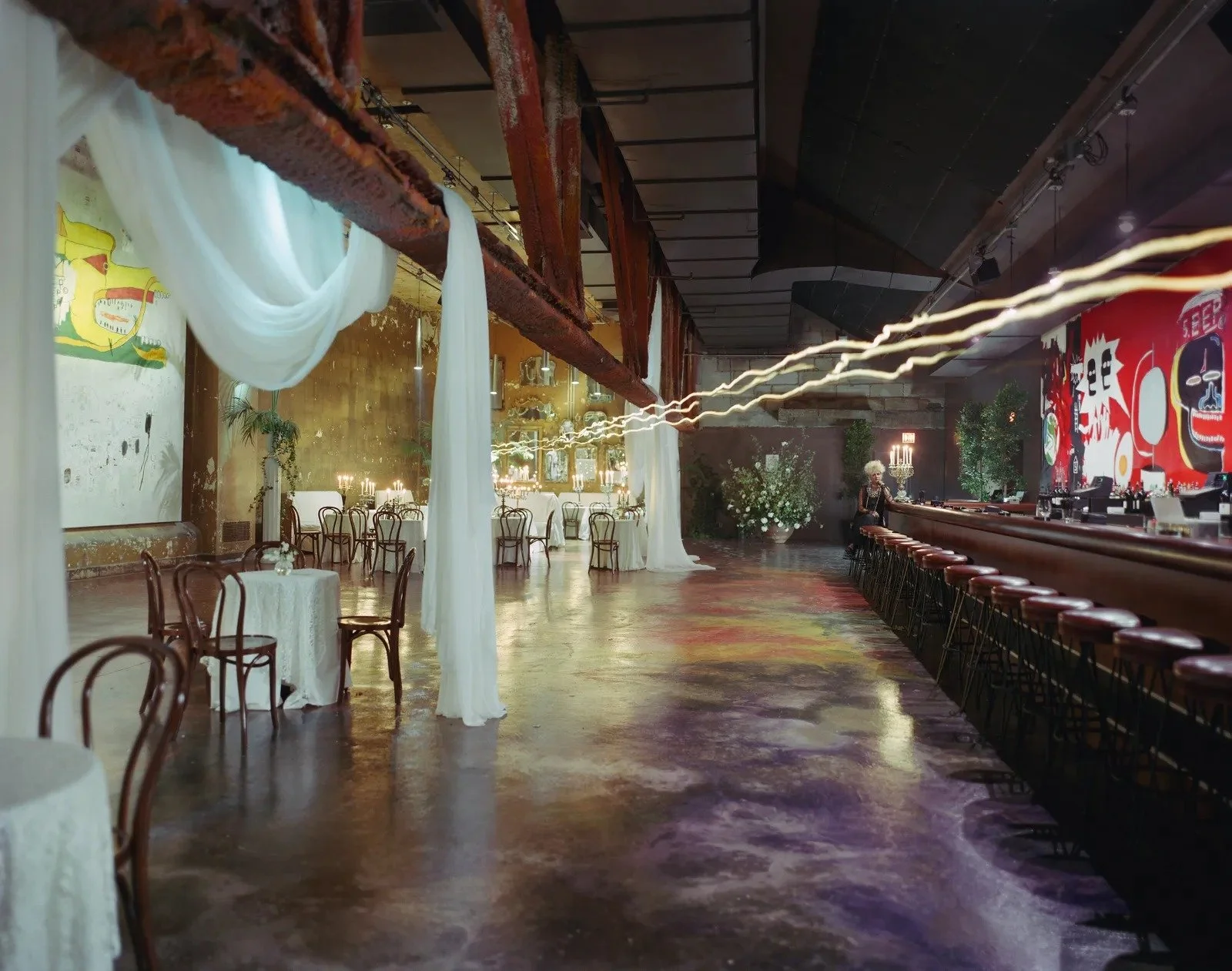 Inspired by Cocteau, the Mike Todd Room was a place for VIPs to carouse and schmooze, and enjoy a cabaret performance. At the back of the bar, a massive Basquiat mural is featured. Inspired by Cocteau, the Mike Todd Room was a place for VIPs to carouse and schmooze, and enjoy a cabaret performance. At the back of the bar, a massive Basquiat mural is featured.
|
Eye-poppingly bright and not a little kitsch, the Kenny Scharf Room was a refuge from real life in 1980s Manhattan, where crime, Aids and social problems were taking their toll.
|
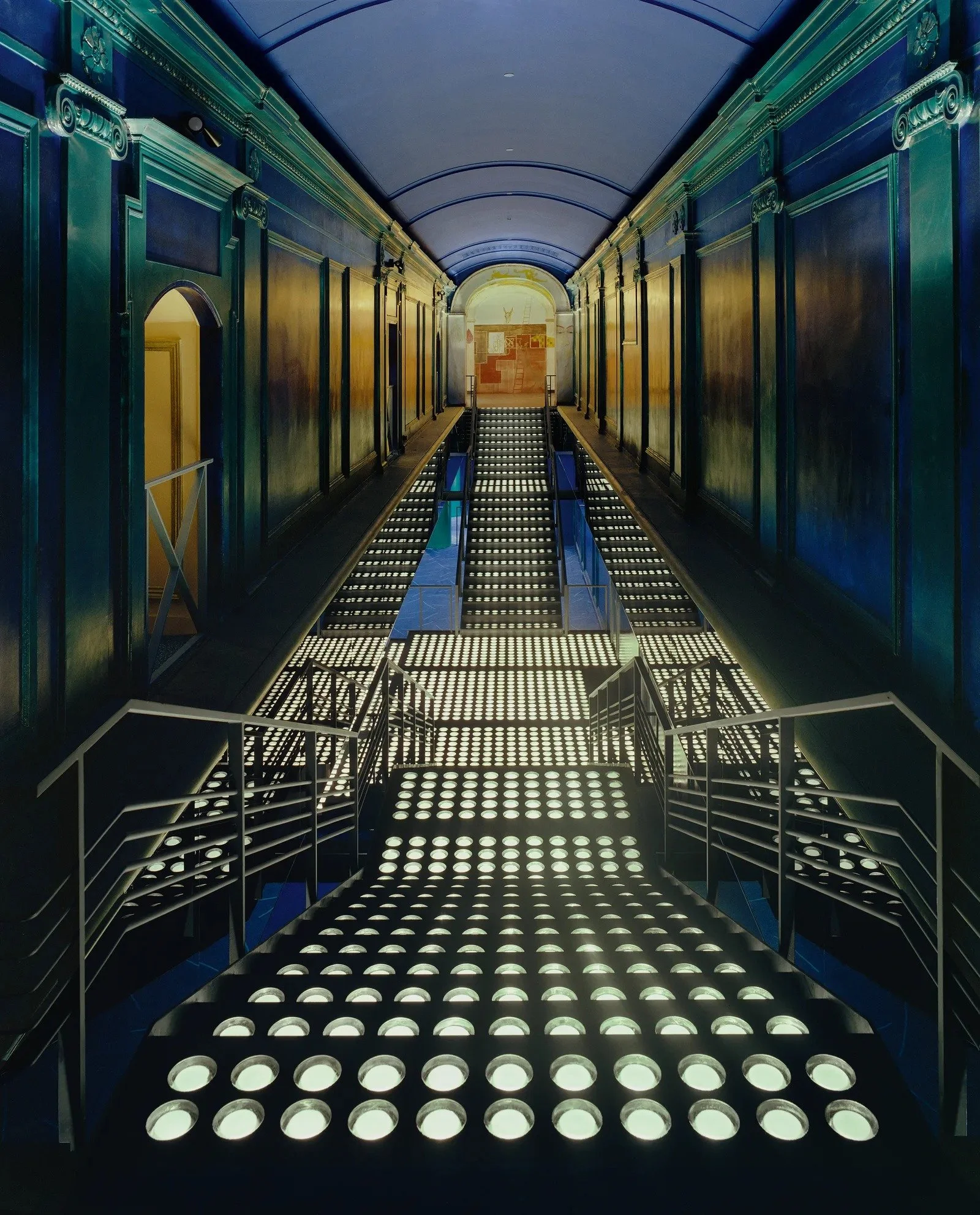 Wide enough to accommodate hordes of people at any one time, the Palladium’s illuminated stairs were a foretaste of the glamour that awaited them on all seven storeys of the East 14th Street club. Wide enough to accommodate hordes of people at any one time, the Palladium’s illuminated stairs were a foretaste of the glamour that awaited them on all seven storeys of the East 14th Street club.
|
Francesco Clemente, an Italian influenced by the art and culture of India, where he has lived, painted the frescoes, which were in sharp contrast to the Kenny Scharf, Keith Haring and Jean-Michel Basquiat murals elsewhere.
|
All text extracted from here. All images courtesy of Timothy Hursley.
In it’s prime, though, the Palladium was a sight to behold. It was big and grand, holding hoardes of people at a time. The installations held inside of it made sure there was always something to look at - something to talk about. Among the glow of neon, the pulse of music and the multitudes of people in their alternative outfits (namely, New York’s Club Kids), the club’s cavernous interior stretched into a surreal landscape of towering columns and suspended balconies, all framed by monumental LED screens flashing with visual art.
They loved Keith Haring’s signature figures danced across the stairwells, his bold, rhythmic lines mirroring the movement of bodies weaving through the space. In the VIP room, Basquiat’s strokes layered chaos and commentary, his graffiti-like markings turning an exclusive corner of the club into a raw, expressive canvas. Andy Warhol’s presence loomed too—not just as a frequent guest but as a creative force, with a series of massive prints of his Last Supper overseeing the dance floor like a grand, almost divine spectacle.
But all good things come to an end. As the club fizzled into oblivion, so did the now-masterworks that once adorned its walls. But beyond mourning these lost pieces, I find myself wondering—what were they doing in a nightclub?
Nightlife and fine art seem to exist in different realms. One thrives in the fleeting moments of excess, with booming music, neon lights, and an energy that pushes you to live in the now. The other stands firmly in a world of permanence, slow contemplation, and classical elegance. At first glance, it’s definitely an unlikely pair.
A History Lesson

Henri de Toulouse-Lautrec, At the Moulin Rouge, 1892 - 1895
The relationship between fine art and nightlife isn’t something that’s just popped up recently. As far back as the 19th century, artists were drawn to the untamed energy of nightlife. Take Henri de Toulouse-Lautrec, for example. In his masterpiece At the Moulin Rouge, Lautrec captured the lively, bohemian energy of Parisian nightlife—where performers, artists, and patrons mingled in a haze of music, dance, and absinthe. Serving as the inspiration for Baz Luhrmann’s acclaimed film Moulin Rouge!, this piece immortalises the allure of nightlife as a space for artistic inspiration in more ways than one.
But beyond being a source of inspiration, nightclubs have also served as playgrounds for artistic experimentation [1]. The Dada movement itself was born in Cabaret Voltaire, a chaotic nightclub in 1916 Zurich where artists like Hugo Ball and Tristan Tzara performed avant-garde poetry and sound experiments. In the late 1970s and early ‘80s, New York’s Mudd Club and Area became hotbeds for underground artists like Haring and Basquiat, too. These spaces weren’t just about partying—they were incubators for radical creativity, where artists could push the boundaries of their work in an environment that encouraged spontaneity and risk.

75 years after the creation of At the Moulin Rouge, and located in the very same city, Le Palace opened as a nightclub combining Parisian chic, fashion and underground cultures. It was frequently attended by the likes of Yves Saint Laurent and Salvador Dali.

Loulou de La Falaise, Yves Saint Laurent and Betty Catroux at the couturier’s home, 55 rue de Babylone, Paris, 1978. Photograph by Guy Marineau.
© Guy Marineau
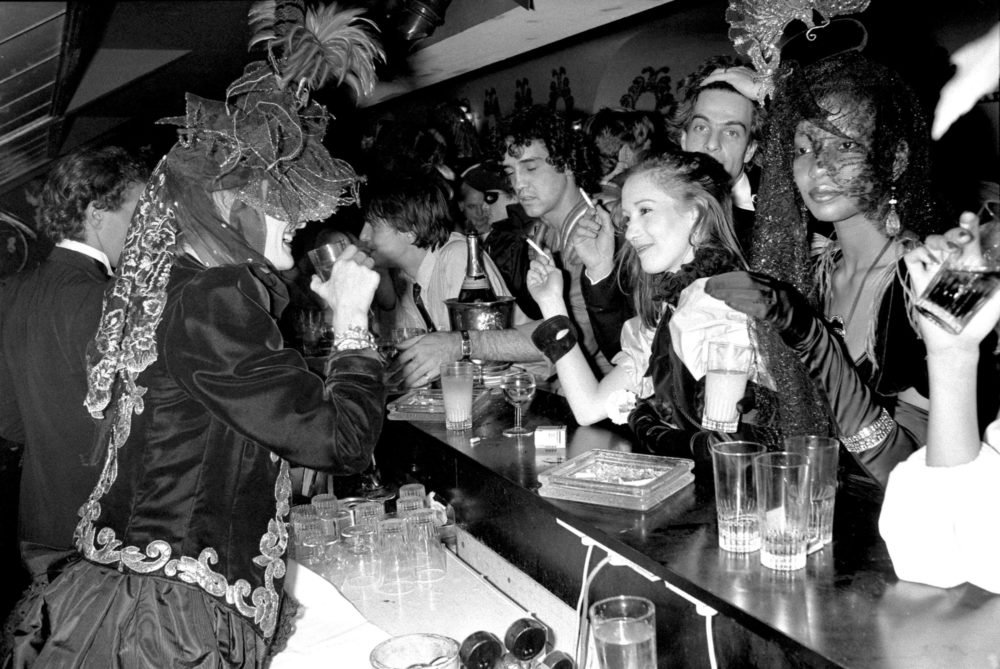
Loulou de La Falaise, Caroline Loeb, Thadée Klossowski and Mounia Orosemane at the Venice Ball, Le Palace, Paris, 1978. Photograph by Philippe Morillon.
© Philippe Morillon

German techno-club Berghain—IYKYK (everyone already knows…), featured artist Jakob Kudsk Steensen’s art installation in 2021.
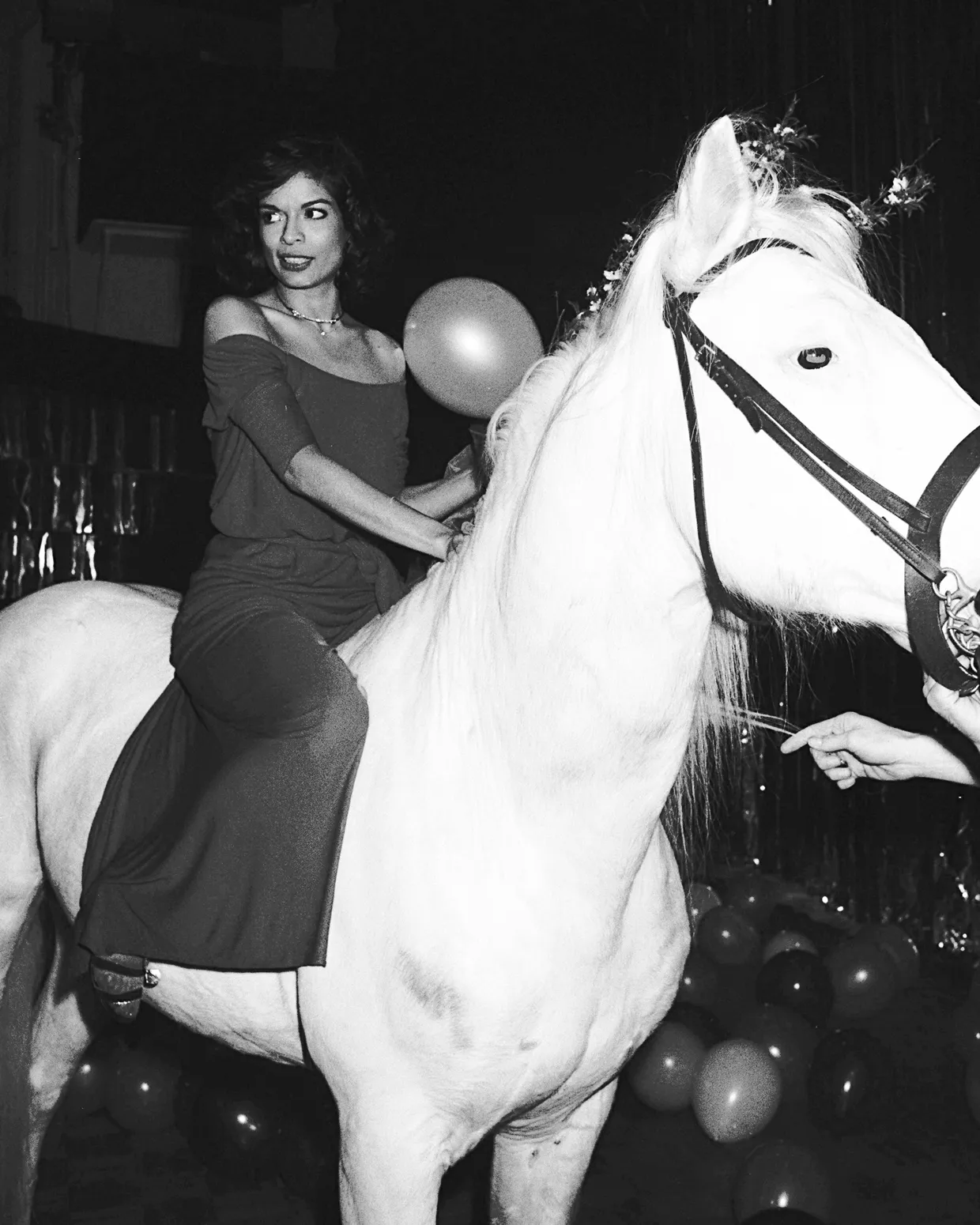
The unmistakeable Studio 54 played a significant role in changing people’s perception of graffiti, by featuring it in its spaces alongside fine art and their patrons, turning it into a more dynamic and versatile art form.
The Allure of The Afterparty
This convergence of nightlife and fine art has transformed the way we think about both, revealing the fascinating social, cultural, and financial dynamics that drive the art world—and why afterparties have become a significant fixture in this new art market.
Over Singapore Art Week this year 2025, the first question we were asked at Sullivan + Strumpf’s opening Shapeshifters, was which parties we were planning to go for this year. And there were a few to choose from, Sohohouse at the Warehouse (where the Soho House residency hosted immersive parties and dinners with Valentino, all the while exhibiting and speaking on art in Singapore). ArtSG at Art Science was hosting an exclusive party for Vernissage patrons, and Capella had one of their own as well.
These modern-day afterparties aren’t just about blowing off steam after a day of gallery-hopping; they’re an integral extension of the festival itself. They offer a space where artists, collectors, and fans connect, share experiences, and, more often than not, blur the lines between different creative disciplines. It is where everything intersects and inspires something new.
It’s a microcosm of the art world at large, where music, dance, and visual art mingle in ways that traditional galleries rarely allow. Art festival afterparties tap into the cultural cachet of fine art while embracing the ever-evolving energy of nightlife. Imagine a DJ spinning tracks while an artist paints in real-time, or an experimental dance performance happening alongside a live installation. These are the kinds of interdisciplinary collaborations that draw inspiration from legendary venues like the Palladium and bring a fresh, dynamic twist to the interplay between art and nightlife.
A Social Contract
But what truly makes these afterparties stand out is their exclusivity. Attending an afterparty at Art Basel or Frieze isn’t just about enjoying art—it’s about being part of an elite cultural circuit [2], where collectors, curators, and artists move freely between roles and identities. For many in the art world the market is just as much about relationships as it is about aesthetics, so nightlife, in all its chaotic glory, offers an informal space for these relationships to flourish. The lines between creator and admirer blur, making it clear that art isn’t just something to view passively; it’s something to be experienced, shared, and lived.
Nightlife as a Gateway to Fine Art?
For many, nightlife is the place where they’re first introduced to alternative forms of artistic expression. And it’s that openness to different kinds of creativity that often translates into the fine art world, where there’s a thriving space for diverse narratives, styles, and techniques. The people who thrive in this vibrant, multidisciplinary environment are the same ones who are often drawn to the eclectic nature of contemporary art—a kind of art that doesn’t fit neatly into any one box, but thrives on experimentation and unexpected fusion.
Singapore under Strobe Lights
We’ve been hearing about RASA nightclub [3], a new community space in Singapore dedicated to music and arts designed by Studio Karhard, the architectural team responsible for Berghain and Kyiv's ∄.
Could such a space like Palladium exist here in Singapore? Picture Ruben Pang’s riotous paintings drenching the space with kinetic energy. Jimmy Ong’s large-scale drawings of contorted bodies all over the dance floor. Melissa Tan’s intricate, relief-like sculptures peppered around the venue like celestial fragments, and suspended above it all, a Suzann Victor chandelier refracting light in hypnotic patterns. Maybe an elusive Robert Zhao video pulsating in the background.
Hard to imagine? Here’s a mock-up:
A Symbiotic Relationship
As we look back on the whirlwind of parties that followed Art Week, one thing becomes clear: nightlife remains an essential part of the art ecosystem. It’s not just a backdrop—it’s a stage where the next movements, trends, and ideas take shape.
Whether it’s a mural at a nightclub, a cutting-edge installation at an afterparty, or a conversation sparked over booze and basslines, sounds and sampoerna, these spaces remind us that art doesn’t just hang on walls—it lives, breathes, and evolves in daylight and night-night.
Nightlife and it’s loose unconventionality allows for a space where worlds collide in the best way. By blending “high” and “low” culture, nightlife challenges our traditional ideas about where art belongs and what it can be. In the process, it reaffirms the timeless truth that art and life is best experienced in the moment.
-
[1] Nightclubs have long been artistic incubators, from Dadaist performances at Cabaret Voltaire to Keith Haring’s murals in NYC clubs. These spaces fuse music, visual art, and performance, shaping modern art through collaboration and experimentation. Read more about the symbiotic relationship between cabaret and club culture and 20th-century visual art here.
[2] Afterparties serve as extensions of the economy where exclusivity is currency in the art world. These gatherings are where collectors, curators, and artists forge connections, and shape their careers and markets.
[3] New nightclub RASA focuses on redefining Singapore’s nightlife by fusing club culture with multidisciplinary art. Its founder envisions a space that embraces Southeast Asian roots, blending music, performance, and visual art into an immersive, cultural experience.
Written by Fithriah Hashim
© Art Again 2025
|
If you enjoyed this blogpost, consider buying me a coffee. Please scan the QR code here >>
What is "buy me a coffee"? Buy Me a Coffee is a way for people to tip or say thank you to content creators and creatives.
Also you didn't ask but here're our preferred coffee orders:
|
 |


